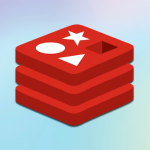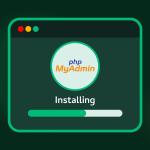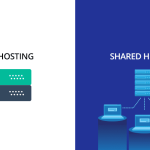Managing databases can be a complex and challenging task, especially for those new to web development. Fortunately, tools like phpMyAdmin make it easier for developers and administrators to interact with MySQL and MariaDB databases through a simple web-based interface. In this blog, we'll explore what phpMyAdmin is, its key features, and why it's an essential tool for anyone working with databases.
What is phpMyAdmin?
phpMyAdmin is a free, open-source tool written in PHP that provides a user-friendly interface for managing MySQL and MariaDB databases. It allows users to perform a wide range of database operations directly from a web browser without needing to use complex SQL commands. phpMyAdmin is widely used by web hosting companies, developers, and system administrators due to its ease of use and robust feature set.
Originally developed in 1998, phpMyAdmin has become one of the most popular database management tools in the world, with millions of users relying on it for their database needs.
Key Features of phpMyAdmin
phpMyAdmin offers a comprehensive set of features that make database management more accessible and efficient. Here are some of its most notable capabilities:
1. Intuitive User Interface
phpMyAdmin's user interface is designed to be easy to navigate, even for those with little experience in database management. The interface allows users to browse through databases, tables, and records, making it simple to locate and edit data.
2. SQL Query Execution
One of the core features of phpMyAdmin is the ability to execute SQL queries directly through the interface. Users can write and run custom queries, view the results, and even save queries for future use. This feature is invaluable for developers who need to perform complex operations or troubleshoot issues.
3. Database and Table Management
phpMyAdmin allows users to create, modify, and delete databases and tables with just a few clicks. Users can define table structures, set primary and foreign keys, and manage indexes, all through the web interface. This eliminates the need to write SQL commands manually, streamlining the process.
4. Import and Export Data
phpMyAdmin makes it easy to import and export data in various formats, including SQL, CSV, and XML. This feature is particularly useful for backing up databases, migrating data between servers, or sharing data with other developers.
5. User Management
Managing database users and their privileges is a critical aspect of database security. phpMyAdmin provides tools to create, edit, and delete user accounts, as well as assign specific privileges to each user. This ensures that only authorized users have access to sensitive data.
6. Data Visualization
phpMyAdmin includes basic data visualization tools that allow users to generate charts and graphs based on the data in their databases. This feature helps users to better understand their data and identify trends or anomalies.
7. Multi-language Support
phpMyAdmin supports a wide range of languages, making it accessible to users around the world. This multi-language support is crucial for international teams and organizations that operate in different regions.
8. Security Features
Security is a top priority for phpMyAdmin, and the tool includes several features to protect your databases. These include SSL encryption, two-factor authentication, and configurable access controls. Additionally, phpMyAdmin provides options to hide sensitive information and restrict access to specific IP addresses.
Why Use phpMyAdmin?
phpMyAdmin offers several advantages that make it a preferred choice for database management:
1. Ease of Use
For many users, the primary appeal of phpMyAdmin is its ease of use. The graphical interface eliminates the need to write complex SQL commands, making database management more accessible to beginners and non-technical users.
2. Wide Adoption
As one of the most widely used database management tools, phpMyAdmin has a large and active community. This means users can find a wealth of tutorials, documentation, and support resources online, making it easier to troubleshoot issues or learn new features.
3. Flexibility and Customization
phpMyAdmin is highly customizable, allowing users to tailor the tool to their specific needs. Users can modify the interface, create custom themes, and extend functionality through plugins. This flexibility makes phpMyAdmin suitable for a wide range of use cases, from small personal projects to large enterprise databases.
4. Web-Based Access
Because phpMyAdmin is web-based, it can be accessed from any device with an internet connection. This remote accessibility is ideal for developers and administrators who need to manage databases from different locations or on the go.
5. Integration with Hosting Services
Many web hosting companies include phpMyAdmin as part of their hosting packages, allowing users to manage their databases directly from their hosting control panels. This integration simplifies the process of setting up and managing databases, especially for users who are new to web development.
How to Get Started with phpMyAdmin
Getting started with phpMyAdmin is straightforward, especially if you're using a web hosting service that includes it as part of their package. Here's a basic overview of how to set it up:
1. Installation
If you're self-hosting phpMyAdmin, you'll need to install it on your web server. This typically involves downloading the phpMyAdmin files, configuring the tool with your MySQL or MariaDB credentials, and uploading the files to your server. Detailed installation instructions are available on the phpMyAdmin website.
2. Accessing phpMyAdmin
Once installed, you can access phpMyAdmin through your web browser by navigating to the appropriate URL. You'll need to log in using your database username and password.
3. Managing Your Database
After logging in, you'll be able to browse and manage your databases, run SQL queries, and perform other database operations through the phpMyAdmin interface.
Conclusion
phpMyAdmin is an indispensable tool for anyone working with MySQL or MariaDB databases. Its user-friendly interface, powerful features, and wide adoption make it a go-to solution for developers, system administrators, and web hosting providers alike. Whether you're managing a small blog or a large enterprise application, phpMyAdmin simplifies the complex task of database management, allowing you to focus on what matters most: building and maintaining your applications.
As you continue to work with databases, phpMyAdmin will likely become an essential part of your toolkit, helping you manage your data efficiently and securely.







